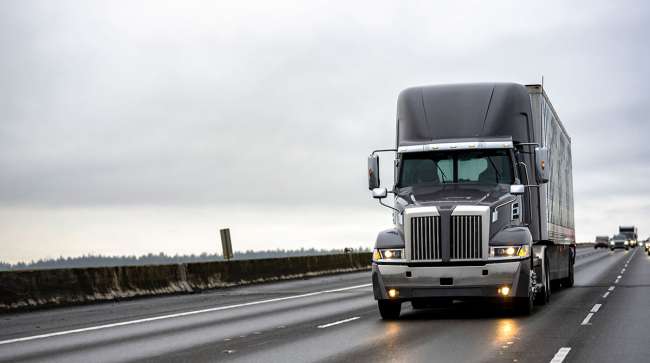ATRI Reports Cost of Trucking Notches Record in 2021

[Stay on top of transportation news: Get TTNews in your inbox.]
Soaring prices for diesel fuel, rising maintenance costs and higher wages for drivers pushed the price of operating a truck up 12.7% in 2021 to $1.855 per mile — the highest level on record — according a report released Aug. 10 by the American Transportation Research Institute.
The study, called “An Analysis of the Operational Costs of Trucking,” determined that higher fuel prices were the biggest contributor to the gain, up 35.4% compared with 2020. Repair and maintenance costs spiked by 18.2% compared with 2020 and driver wages continued their upward trend of the past several years, rising 10.8% compared with 2020. On a cost-per-hour basis, costs increased to $74.65.
“Costs across the board are going up, and we are seeing that reflected in the carrier’s costs,” ATRI President and CEO Rebecca Brewster told Transport Topics. “Certainly, one of the big impacts in this year’s data is fuel costs, and we have seen the driver shortage challenges reflected in the driver wage and benefit data. This might be described as death by a thousand cuts, but certainly, where you see bigger jumps like fuel, driver costs — that is where the fleets are really feeling the pain.” Brewster noted total driver compensation is now $0.809 per mile, 10% higher than it was in 2020.

Brewster
“It’s a perfect storm of everything, unfortunately,” added ATRI Senior Vice President Dan Murray. “We’ve seen fuel prices go up, we have seen parts and labor going way up. Some of that is because the supply-demand curve, in particular those coming in from Southeast Asia, fewer parts means more value or money for each part.”
The ATRI report found that even when fuel costs are removed from the equation, the marginal costs of trucking increased by 10 cents per mile between 2020 and 2021, from $1.338 to $1.438. The group said the overall findings provide a specific breakdown of numerous line-item measures related to trucking, specific by fleet size and sector. This, ATRI said, allows for tailored benchmarking of the actual operational expenses of operating a truck. The survey incorporated 2021 data culled from 173,000 truck-tractors, 552,000 trailers and more than 14.6 billion vehicle-miles traveled.
While trucking costs rose last year, ATRI said overall industry health remained strong as the country emerged from the COVID-19 pandemic. Amid challenging supply chain disruptions and an economy that shifted more toward e-commerce and away from service-based spending, the average operating margin in most sectors of the industry remained in the 10% range.
Murray stressed that rising driver wage and benefits spending has the positive effect of attracting more qualified men and women to trucking, as they see an opportunity for a stable, middle-class lifestyle.

Murray
“The only good thing to brag about in the report on increased costs is driver wages,” Murray said. “That is catching up to where we need to be to attract drivers and keep drivers. We are making positive improvements in driver compensation increases.”
American Trucking Associations Chief Economist Bob Costello estimates the industry is short about 80,000 drivers, and worries things could get worse unless more is done to recruit younger drivers, military veterans and those considering changing careers.
The ATRI report also notes rising diesel costs compelled fleets to focus more closely on fuel efficiency, specifically when it came to drivers’ hours of service.
Empty or “deadhead” mileage for nontanker trucks decreased to 14.8% from 17% a year ago, while overall average fuel economy for trucks increased to 6.65 miles per gallon from 6.53 mpg a year ago.
FOR IMMEDIATE RELEASE: #ATRI’s Newest Operational Costs Research Documents Costliest Year Ever in #Trucking https://t.co/ltkPb2LzoM pic.twitter.com/VyJv5UTZTS — ATRI (@Truck_Research) August 10, 2022
“I’ve always said we are a very responsive and resilient industry, and I think it is important to note that where we can make improvement in efficiency, we can do it relatively quickly,” Murray said. “We’re seeing deadhead miles decrease considerably and that has always been a very challenging thing for our industry and we are doing it successfully.”
That said, Murray is looking cautiously at what next year’s report might show. He anticipates a big increase in 2022 operating costs that will again push cost-per-mile to a record level. Diesel prices reached an all-time high of $5.81 a gallon on June 20, according to the Energy Information Administration, but have been on a steady decline through the hottest summer months.
“2021 was an expensive year and I don’t see 2022 being any different,” Murray said. “But at some point these trend lines, these costs can’t continue and I think we could see more bankruptcies or consolidations.”
Want more news? Listen to today's daily briefing below or go here for more info:




